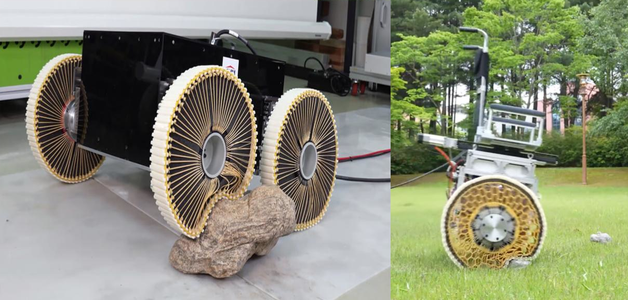Wheelchairs face significant challenges navigating uneven terrain, limiting their users’ mobility and preventing them from traversing steps, dirt roads, or rocky paths in parks. Similarly, robots struggle with uneven surfaces, and vehicles designed for lunar or Martian exploration require wheels capable of adapting to diverse landscapes.
Korean researchers have developed a shape-shifting wheel designed to traverse both normal and uneven surfaces. Inspired by the behavior of water droplets, this innovative design allows the wheel to adapt its shape to conform to various terrains.
The wheel consists of a series of interconnected blocks arranged around its outer edge, connected to the wheel’s axle by wires. The axle is composed of two movable sections, and the wires extend from one side of the wheel to the opposite side of the axle, then to the other side of the axle, and finally to the opposite side of the wheel. This design makes the wheel’s diameter variable: when the two axle sections move apart, the diameter decreases, and when they move closer together, the diameter increases.
On normal surfaces, the wheel functions normally with the axle sections far apart, keeping the block chain taut and maintaining its shape. This allows for fast and smooth movement.
However, on uneven terrain, the axle sections move closer together, making the block chain flexible. It bends in response to changes in the underlying terrain, mimicking the behavior of water droplets that change shape in response to external forces.
Tests have been conducted using a four-wheeled vehicle and a two-wheeled wheelchair equipped with these shape-shifting wheels. Both successfully navigated uneven terrain, including rocks and steps slightly higher than the wheel’s diameter.
The research has been published in the Journal of Robotics Science.









